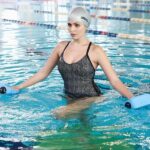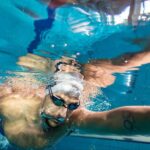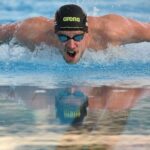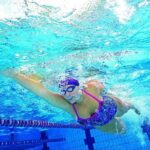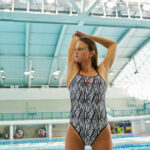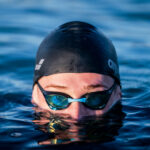Here is the answer to the 3 most common mistakes when swimming breaststroke
Together with the butterfly, the breaststroke is considered to be extremely tough on the lumbar region (lower back) and cervical spine (neck).
What this doesn’t tell us is that, more often than not, these “risks” are due to poor technique.
Let’s look at the three most common mistakes and see how we can rectify them:
1. Lack of coordination between breathing/arm stroke: you should start to raise your head just as you begin your arm stroke (as your hands part).
Very often the hands begin moving before the head: this delay in breathing means until you start to bring your elbows together inevitably causes your hips to drop.
Here are some exercises to correct this mistake:
– Swim breaststroke with freestyle legs, starting to breathe while your arms are still extended forwards, hold this position for 2 seconds and then complete your arm stroke.
– Breakdown the breaststroke into 5 steps: raise your head – part your arms – bring your elbows together – extend your arms – make a leg kick
– Move your hands like butterfly wings with your arms extended forwards, breathing forwards every 4 hand rotations.
2. Failure to bring your elbows together at the end of the pull phase: this is commonly referred to as breaststroke with wide elbows. This means the main muscles being used to raise your head are those in your lower back (lumbar region) straining them excessively.
Here are some exercises to correct this mistake
– Swim breaststroke keeping your head down (breathing every other stroke) making sure (by looking carefully) your elbows come together
– Swim breaststroke with one arm only, recovering your arm along the side of your body
– Swim breaststroke with butterfly legs “squashing” your elbows together at the end of the pull phase
3. Incorrect head position: you often see people swimming breaststroke with their head facing forwards looking down the pool. As well as increasing front water resistance), your splenius muscles between the head/neck are placed under undue strain.
Here are some exercises to teach you how to keep your head in line with the rest of your body:
– Swim making two leg kicks for each arm stroke, keeping your head in line with your body during the second stroke without breathing and making sure your head is facing downwards.
– Swim breaststroke with butterfly legs looking down at your stomach after breathing out.
As well as being less stressful for your lower back and neck regions, finding the right swim position will make your stroke more economical and efficient, so why not work on this?
Written by:
arena coaches
Swim coaches, trainers and experts will give you all kinds of tips for performing at your best in both training and races.
